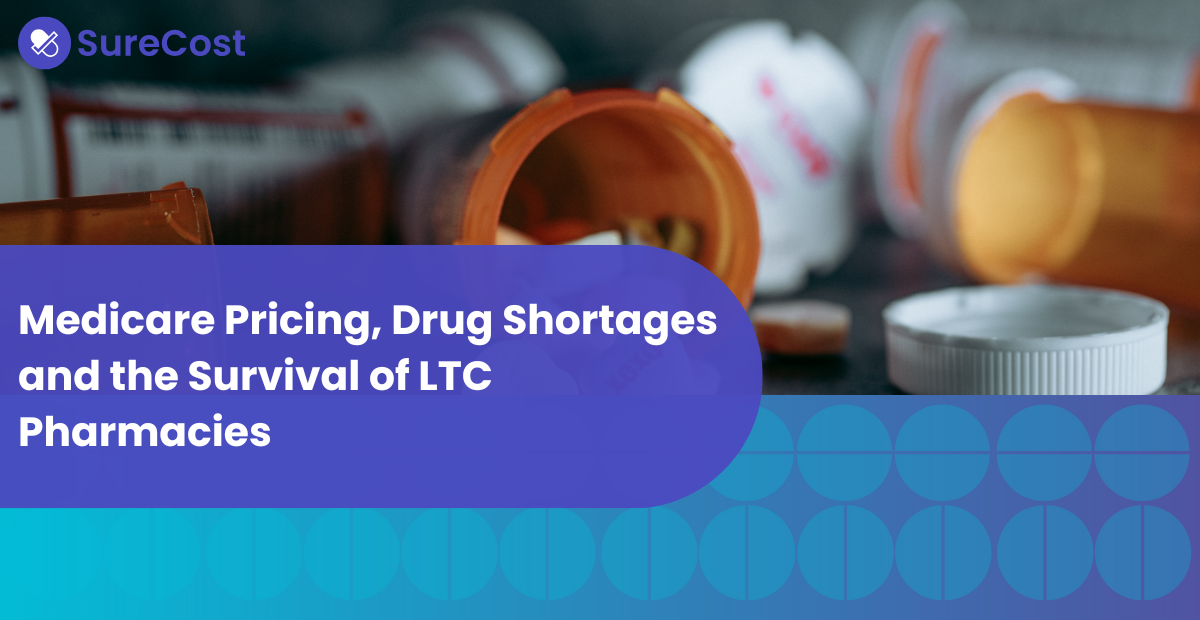There are many advantages to joining a group purchasing organization(GPO). But if you ask most pharmacies, they’ll probably tell you the main benefit is better pricing on specific products. Unfortunately, it turns out that finding low prices and getting those low prices don’t necessarily go hand-in-hand.
This blog post will discuss GPOs’ effectiveness in adhering to pricing. GPOs can save pharmacies a lot of money, assuming they consistently adhere to their agreed-upon pricing. We’ll also explain how pharmacies can ensure that’s always the case. First, we’ll discuss what a GPO does and then unpack how often they do it.
Why Pharmacies Join GPOs
A GPO’s primary role is to use its combined buying power to negotiate better product prices and significant savings with manufacturers, wholesalers and vendors on behalf of its member pharmacies.
They also offer incentives like market share rebates (i.e., increased rebates as your pharmacy moves more of a specific product) and flat rebate incentives for products. Other GPO benefits include negotiated rates through an insurance carrier’s pharmacy benefits manager (PBM) and discounted services. But they’re primarily known for getting better prices on products.
Still, finding low prices and getting low prices don’t necessarily go hand-in-hand. For many pharmacies, there’s a difference between GPO pricing and what they actually pay for those items.
Surprising Statistics on GPO Pricing
Each year, SureCost’s Smarter Purchasing Report analyzes purchasing data from over 5,000 pharmacy professionals across the country. Among other key areas of smarter purchasing, this year’s report examined adherence to GPO pricing among retail and LTC pharmacies. The results were surprising, probably troubling for some pharmacies, but ultimately instructive. We’ll discuss what they demonstrated about purchasing below. First, let’s look at the numbers and what they mean.
On average, annually, about 15% of GPO-qualified purchases were priced incorrectly. That led to an average overcharge of nearly $103K each year. That’s just the average; some pharmacies saw almost 55% of their GPO spend lost to incorrect pricing.
Overspending on incorrectly priced GPO items also raised these pharmacies’ total COGS by a quarter percentage point. Do the math with your own COGS; no matter the dollar amount, is that money you’d want to spend—especially when you’re not supposed to be paying that much?
In terms of total spend, it’s worth noting that retail pharmacies found higher overcharges. That’s likely because pharmacy staff couldn’t check every received item against the GPO price. That’s a lot of work, and it’s one more task on people’s already full plates. With burnout and staff shortages soaring, it’s easy to lose sight of having to validate pricing at every step. As we’ve seen, it’s also costly.
Transparency and Compliance
This issue comes down to transparency into your own contracts: what you’re supposed to be paying versus how much you are actually paying. Every dollar counts. Overpaying even a small amount every time you purchase GPO-qualified items will quickly add up. Again, it’s money you shouldn’t be losing in the first place.
The first step toward transparency is ensuring all trade partners—whether a GPO, primary vendor or any secondaries—comply with their agreed pricing. That means streamlining this otherwise tedious, time-consuming process of checking invoices against purchase orders. A smarter purchasing solution is crucial. You don’t need to manually check each line item against your initial order. In fact, you shouldn’t: it takes too much time, and manual processes lead to manual errors.
A unified purchasing management system tracks the entire process: from uploading a purchase order through receiving packages up to approving invoices. Instead, scan items through an integrated purchasing solution. The system instantly compares invoices and POs and alerts you of any discrepancies. That includes failure to honor GPO pricing as well as rates negotiated with other vendors.
With all purchasing data in a single interface, when you encounter an error in pricing, you have all the information to correct the issue at your fingertips. The burden is on pharmacies to spot these errors and promptly report them with the right documentation. Having a system to flag issues and report them immediately ensures you see the problem and can immediately address it.
Transparency also means consistent awareness of GPO pricing for you and your entire team. If other staff members are also making purchases, make sure they know which items to buy. With an integrated purchasing solution, you can standardize purchasing strategy across all team members and locations. Instead of constant emails or sticky notes on the monitor, the system drives staff to make purchases aligned with your plan (e.g., GPO pricing, rebate tiers, etc.).
Smarter Purchasing With GPOs and More
GPO membership can be a huge advantage to pharmacies. But, harnessing an integrated purchasing solution maximizes that advantage. Smarter purchasing means making sure your pharmacy always gets—and pays—what it expects. Our 2024 Smarter Purchasing Report outlines this strategy and the best tools to implement it. Download the report now to learn more.
.png?w=500)




.png)
